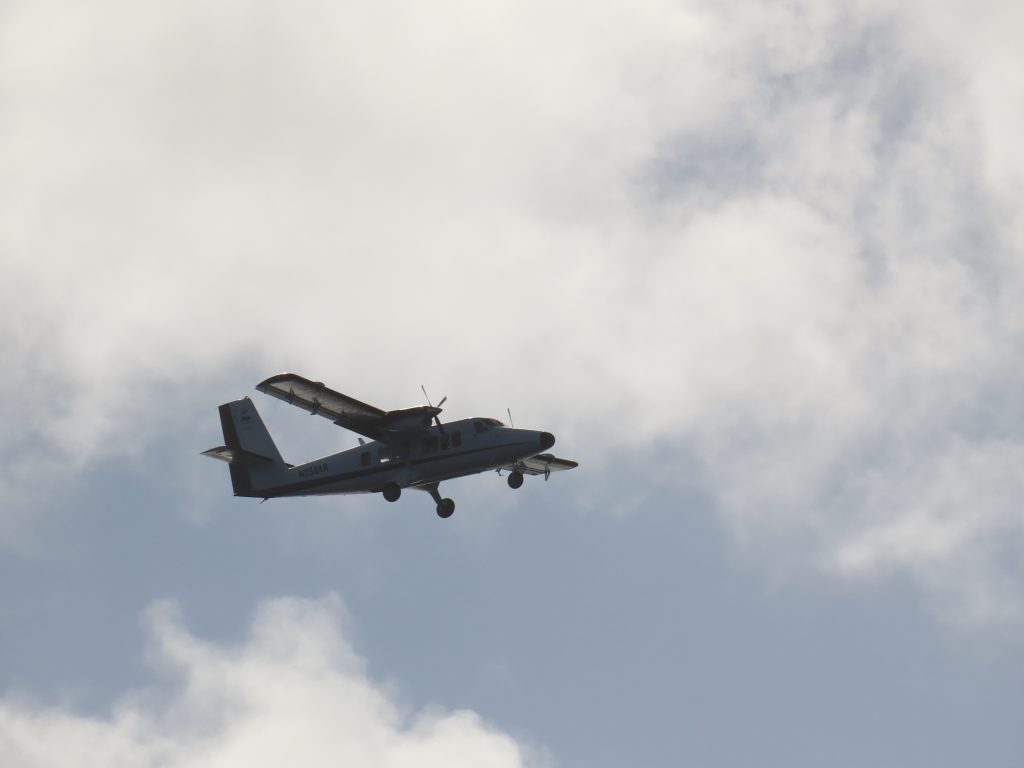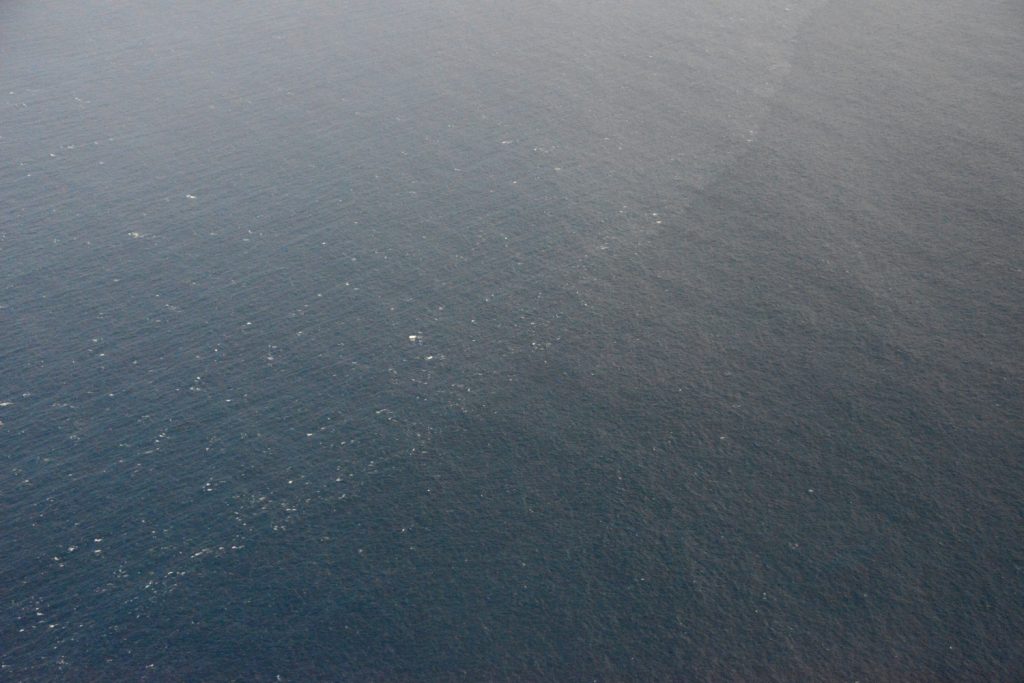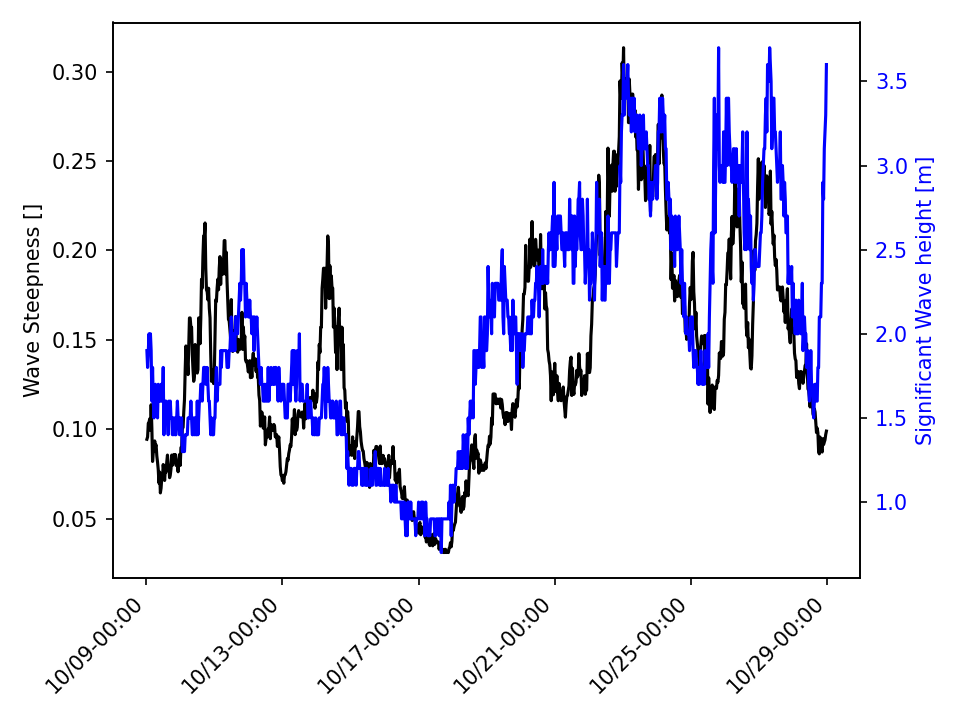By Gwendal Marechal, postdoctoral researcher at the Colorado School of Mines // Aboard the Bold Horizon //
Upon leaving the Breton coastlines after my Ph.D., I started a postdoc at the Colorado School of Mines. After one month in the Colorado mountains, I traveled to Newport, Oregon, to board the Bold Horizon for one month of measurements offshore of San-Francisco for the NASA S-MODE (Sub-Mesoscale Ocean Dynamics Experiment) field campaign. This experiment focuses on sub-mesoscale currents (spatial scales smaller than about 30 km, or 18 miles, at these latitudes), and tries to assess how important these structures are for the vertical exchange in the ocean and fluxes between the lower atmosphere and the upper ocean.
We set sail for the experiment area after six days of mobilization in Newport. This is my first cruise that focuses on a different topic than surface gravity waves (waves hereafter). Actually, during this cruise, the (steep) waves were mostly a drawback for the CTD, Eco-CTD casts, and floating/underwater platform (sea-gliders, wave gliders, Saildrones) deployments. These waves were, however, one of the main focuses of the Twin Otter airplane flying above us during the S-MODE experiment. This aircraft and its instrument MASS were flying almost every day throughout the cruise collecting the sea-state properties at very high resolution. In other words, it measured the wave height, direction and wavelength. Also, with its optical sensor, MASS is able to capture the breakers resulting from waves, the famous “sheep” at the ocean surface.

Even if we are not measuring waves directly from the Bold Horizon, some of our floating platforms, such as the Saildrones and the wave gliders, do measure waves. Because the waves play the role of a liquid boundary between the ocean and the atmosphere, they strongly interact with the two systems. Therefore, in the context of measuring the sub-mesoscale currents and their associated air-sea fluxes and mixing in the upper ocean, measuring waves is mandatory.
For instance, currents can enhance the breaking probability of the waves and thus the associated air-sea fluxes. One can notice the effect of the current on waves at front locations captured from the Twin-Otter aircraft.

During the cruise we have experienced a large number of sea states, from calm ripples to almost 4 meter (13 feet) wave height during one night (October 23rd). The wave height is not actually a drawback for instruments deployments and the life onboard; indeed, waves can be high, yet very long, allowing the ship to travel on them like on smooth hills. On the other hand, the steep waves, those that are short and high, definitely cause a strong pitch and roll of the ship and therefore an uncomfortable sleep or the end of CTD casts. However, those waves were always welcomed with joy by the night watch (from 4 p.m. to 4 a.m.). Seeing the dry lab, the dining room, and the bridge tilting by more than 10 degrees has nothing to envy from a traditional roller coaster. Make sure that your belongings are firmly attached!

I spent most of my free time observing waves from the deck or the bridge of the ship. Well, my free time during daylight was no longer than 2 hours daily, and this was my chance to discuss with the whole scientific team, because this was the only time when everyone was awake. I took the opportunity to be with expert in air-sea interactions to learn about the atmospheric boundary layer from simple cloud observations or radiosonde deployments. Certainly, I have learned a lot about cloud formation, cloud dynamics, and how the clouds are strongly linked to the sea surface temperature. On my side, I tried to share my “nerdy” wave-knowledge about wave breaking, sea-spray emissions, wave modulation, and what I understand in general about this moving superficial layer of the ocean.
Measuring waves or not, this cruise was definitely a new crazy adventure at sea with the night watch team (Mackenzie, Jessica, Igor, Ben, and Alex) and the crew in general. I’m looking forward to the next cruise for a new journey!

